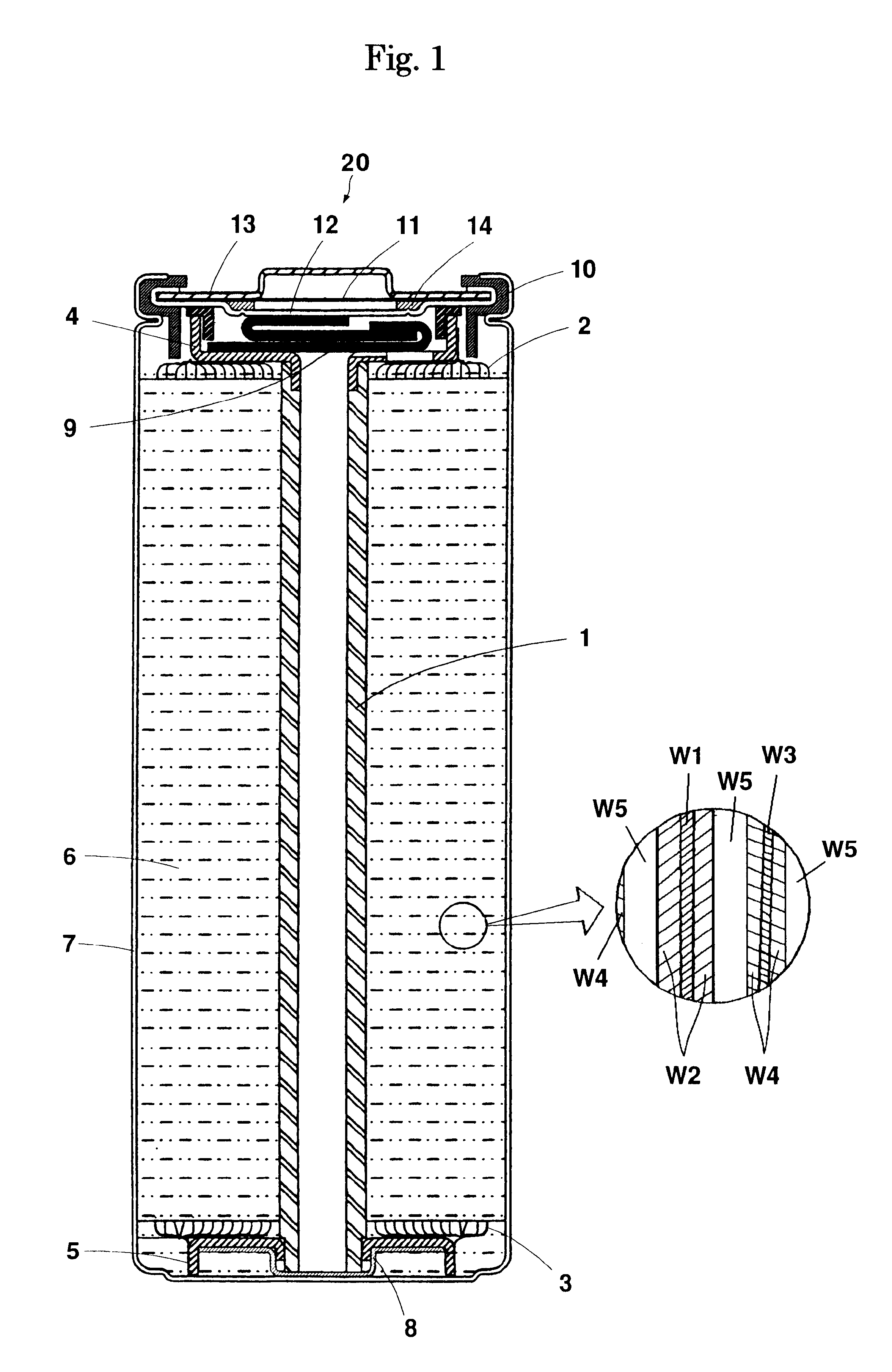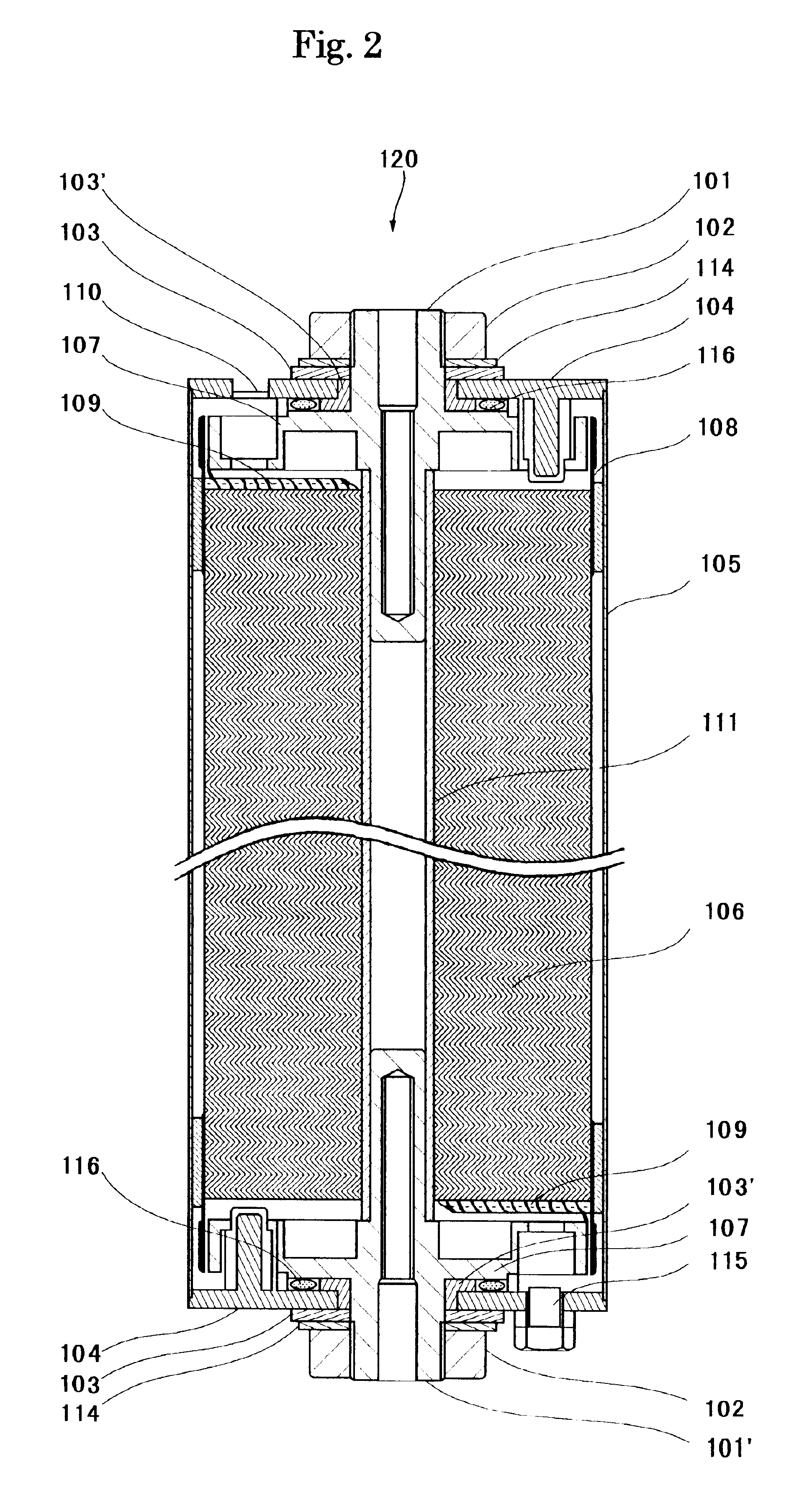Non-aqueous electrolytic solution secondary battery
a secondary battery and electrolytic solution technology, applied in the direction of cell components, sustainable manufacturing/processing, final product manufacturing, etc., can solve the problems of increasing the battery size, affecting the acceleration performance of the vehicle, and the practical difficulty of mounting the battery in the vehicl
- Summary
- Abstract
- Description
- Claims
- Application Information
AI Technical Summary
Benefits of technology
Problems solved by technology
Method used
Image
Examples
example 1-2
As shown in Table 1, in Example 1-2, a battery was manufactured in the same manner as the Example 1-1 except that the amount of application of lithium manganate was 120 g / m.sup.2, the thickness (which did not include the thickness of the collector) of the positive electrode active material mixture layer (active material applied portion) W2 was 109 .mu.m, the length of the positive electrode was 342 cm, the thickness (which did not include the thickness of the collector) of the negative electrode active material mixture layer (active material applied portion) W4 was 79 .mu.m, and the length of the negative electrode was 354 cm.
examples 1-2-2 to 1-2-5
As shown in Table 1, in Examples 1-2-2 to 1-2-5, each battery was manufactured in the same manner as the Example 1-2 except that the Li / Mn ratio of lithium manganate was 0.55, 0.58, 0.60 or 0.61.
example 1-3
As shown in Table 1, in Example 1-3, a battery was manufactured in the same manner as the Example 1-1 except that the amount of application of lithium manganate was 160 g / m.sup.2, the thickness (which did not include the thickness of the collector) of the positive electrode active material mixture layer (active material applied portion) W2 was 146 .mu.m, the length of the positive electrode was 282 cm, the thickness (which did not include the thickness of the collector) of the negative electrode active material mixture layer (active material applied portion) W4 was 106 .mu.m, and the length of the negative electrode was 294 cm.
PUM
| Property | Measurement | Unit |
|---|---|---|
| average particle diameter | aaaaa | aaaaa |
| particle diameter | aaaaa | aaaaa |
| specific surface area | aaaaa | aaaaa |
Abstract
Description
Claims
Application Information
 Login to View More
Login to View More - R&D
- Intellectual Property
- Life Sciences
- Materials
- Tech Scout
- Unparalleled Data Quality
- Higher Quality Content
- 60% Fewer Hallucinations
Browse by: Latest US Patents, China's latest patents, Technical Efficacy Thesaurus, Application Domain, Technology Topic, Popular Technical Reports.
© 2025 PatSnap. All rights reserved.Legal|Privacy policy|Modern Slavery Act Transparency Statement|Sitemap|About US| Contact US: help@patsnap.com


